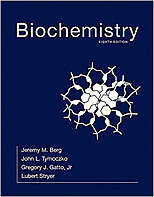
Biochemistry
Berg, Jeremy M.; Tymoczko, John L.; Gatto, Jr., Gregory J.; Stryer, Lubert
8 ed.
New York: W.H. Freeman and Company, 2015
 |
Biochemistry Berg, Jeremy M.; Tymoczko, John L.; Gatto, Jr., Gregory J.; Stryer, Lubert 8 ed. New York: W.H. Freeman and Company, 2015 |
37 termes
| HbA n. (hemoglobin A) |
|
| HbH n. (hemoglobin H) |
|
| heat-shock transcription factor n. (HSTF) |
|
| helix stacking n. |
|
| heme prosthetic group n. |
|
| hemorrhagic disposition n. |
|
| hereditary information n. |
|
| hereditary nonpolyposis colorectal cancer n. (HNPCC) |
|
| hERG n. |
|
| heterodimeric sweet receptor n. |
|
| hexose monophosphate pool n. |
|
| high-energy electron n. |
|
| highly cohesive n. |
|
| highly parallel n. |
|
| histone code n. |
|
| histone octamer n. |
|
| HLA-A2 n. (leukocyte antigen A2) |
|
| HMM n. (heavy meromyosin) |
|
| HNPCC n. (hereditary nonpolyposis colorectal cancer) |
|
| homocysteine level n. |
|
| homolytic cleavage reaction n. |
|
| Hsp70 n. (heat shock protein 70) |
|
| HSTF n. (heat-shock transcription factor) |
|
| human migration n. |
|
| human proteome n. |
|
| Hurler disease n. |
|
| hybridoma cell n. |
|
| hydrocarbon tail n. |
|
| hydrogen-bond donor n. |
|
| hydrolytic reaction n. |
|
| hydrolyze, to v. |
|
| hydrophilic amino acid n. |
|
| hydrophilic moiety n. |
|
| hydrophobic moiety n. |
|
| hyperbaric oxygen therapy n. |
|
| hypersensitive site n. |
|
| hypoxia inducible factor 1 n. (HIF-1) |
|